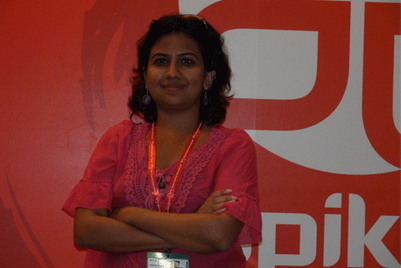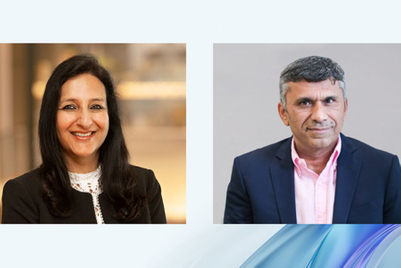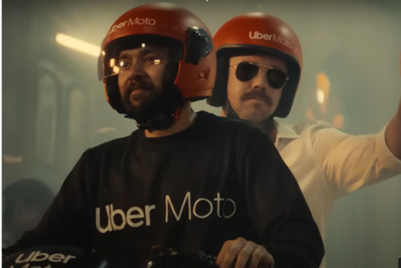
Throughout the two-day festival programme Spikes Asia 2011, global industry heavyweights like McCann Erickson’s Matias Palm-Jensen, Microsoft global creative solutions Stephen Kim, Publicis Worldwide executive chairman Jean-Yves Naouri, Wunderman CEO Daniel Morel, Google Greater China head of marketing Wei Jiang and PHD global strategy and planning director Mark Holden will entertain and inspire delegates. The advertising festival has a total of 27 seminars and five workshops.
Other highlights on the programme include Campaign Asia-Pacific editorial director Atifa Silk's interview with Omnicom Group Inc CEO John Wren, DDB's sponsored seminar with writer and co-executive producer of The Simpsons and the Spikes Asia Awards Afterparty tomorrow evening.
In addition, Grey Group will feature celebrity chef Bobby Chinn in its second 'Eye on Global Asians' seminar, talking about his path to global culinary success and drawing parallels between his accomplishments and the creative and communications industries, with the agency’s regional chairman and chief executive, Nirvik Singh.
This year, a total of 3,647 entries were received from 17 countries, an increase of 19 per cent from last year. A total of 612 entries were received from India, followed by Australia with 443, host country Singapore with 429, China with 372 and Japan with 366 entries.
The first seminar yesterday focused on consumer co-creation, entitled “Is the Agency of Tomorrow the Consumer?”. It was attended by over 750 delegates.
Hosted by Frederique Covington, Microsoft's Asia-Pacific CMO, the panel discussion talked about consumer co-creation, its best practices and its impact on marketers and their agencies, with panelists including Joel Cere, global insights and innovation solutions director at eYeka; Leonardo O’Grady, director Asean integrated marketing and communications at Coca Cola Asia Pacific; Rob Sherlock, chief creative officer at Draftfcb; Frank Reitgassl, head of account planning at BBH; as well as James Thompson, Asia-Pacific CMO for Diageo.
Panelists concluded that it was important for agencies to change and transform, ahead of the increasing trend of consumer co-creation that engages directly with the consumers.
While marketing is all about "participations by consumers", Thompson said the power of consumer co-creation was not 'about the number of participations but it is rather to get consumers to understand the brand better. It is not about advertising but creating an environment for all."
Sherlock meanwhile said the agencies should be "the curator" because they have the expertise and professionalism, while the "creators" of crowd-sourced content should be free to build what they will. Saying that "a good idea is still a good idea no matter where it comes from", he added that a lot of consumers still do not have the ability to do print well even though they like to tell stories via TVC and are able to do it well.
“They (the agencies) should be consumer-centric and they be driven to form consumer-centric methodology. When you get down to it, you still need a professional… you need someone who has a wide scope of experience to execute and select the best way of communications. You will have many pieces (of work) that represent the clients but these have to be gone through by the agencies,” he added.
While co-creation involves relatively lower costs than getting a creative agency, but Cere said the agencies should compete on innovation on products, retail and communication. “(But) what we are doing is the reverse. We put the (creative) process on the internet and put the consumers at the driving seat, making them to come out with the innovation value from the beginning. In that context, you get fresh thinking and innovation. It is when we accelerate innovation for our clients, we bring in the value. That is the strategy,” he said.
He noted that consumers’ ideas do not have to be creative, but the fundamental is about opening up the creative platform to the eco system that can attract the creative talents outside of the agencies. “The role has changed. You might have a lot of creative talents in your agency. Outside the agencies, there are millions of people and they are creative thinkers, too.”
Reitgassl said co-creation has given the consumers opportunities to create outstanding works, but he believed that strategy and creativity must come hand-in-hand.
O’Grady said it is a creative collective effort that can be made up by teenagers, ECD and everyone, to stand out the brand.


.jpg&h=334&w=500&q=100&v=20250320&c=1)
.jpg&h=334&w=500&q=100&v=20250320&c=1)



.jpg&h=334&w=500&q=100&v=20250320&c=1)



.jpg&h=334&w=500&q=100&v=20250320&c=1)



.png&h=268&w=401&q=100&v=20250320&c=1)




